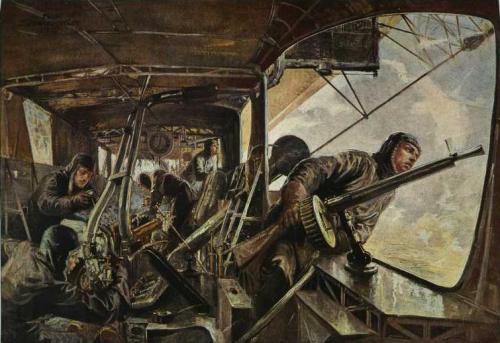A few ideas for naming Aircraft:-
UNITED STATES - I believe there's something of a trend to use numbers in place of names for US aircraft, but that's no fun so I might as well offer SOME suggestions!

BOMBERS: Visigoth, Vandal, Viking (as a nod to Gotha bombers of WWI, to the Northern Hordes of old and to the havoc these big fellows will be wrecking on the opposition), Skyscraper (a name I usually hang to the local equivalent of the Superfortress, as a nod to just how HIGH these fellows can fly), Filibuster (applied to a bomber notorious for spearheading attacks on Richmond and interrupting sessions of Southern Congress in the process), Leveller (i.e. "Will level all standing structures in a hurry"), Thunderbird, Condor.
SCOUTS: Plainsman, Lookout, Pioneer, Frontiersman (I like the idea that Socialist influenced USA really buys into the motif of the American heading West), Owl (Big Eyes = Scout), Swift.
FIGHTERS: Eclipse, Sundowner (nod to Pacific War against "Land of the Rising Sun"), Loggerhead, Hatchet, Sharpshooter, Peacemaker.
TRANSPORT: Spartacus (A nod to the Red Revolutionaries and to the OG Rebel, to the Socialist movement of Our Own timeline, as well as a less direct one to the Hercules of Our Own History), Conestoga (another nod to Wagon Trains of Old West), Lugger ("SOMEONE has to lug your **** round the map, son - that's us"), Swallow ("We hold everything").
GROUND ATTACK: Raven, Buzzard (I tend to associate birds w. USA, beasts w. CSA), Hacksaw, Buzzsaw, Whipsaw (able to cut through large numbers of ... well everything = Ground Attack), Jackhammer, Sledgehammer (might work best for a dive bomber, might work best of all for a straight-up bomber).
SEAPLANES: Gull, Albatross, Lugger, Clipper, Gander.
CONFEDERATE STATES
BOMBERS - Rattlesnake (aka "shake & break" "rattle & shake" "shake & quake"), Copperhead ("So good you know we must have stole it"), Sidewinder ("Hit THIS!").
SCOUTS - Miami, Kiowa, Ottawa (I imagine that the Confederacy uses the "Honest Injun" archetype to whip up righteous indignation against the North and I like the idea that the names slowly become more aggressive over time - Ottawa being a LONG way from CS territory).
FIGHTERS - Caballero/Cavalier (one imagines quite a few of the earliest purpose built CS warplanes initially carried Spanish names, to maintain the polite fiction that these were really MEXICAN designs), Bloodhound, Coon Hound, Wolfhound, Foxhound (all variants of the Hound Dog).
TRANSPORTS - Burro, Traveller (the former is a younger design than the latter).
GROUND ATTACK - Thoroughbred, Colt (based on association w. "Mule"), Toro, Longhorn (based on fighting bulls goring their opponents more than anything else).
SEAPLANES - Buccaneer.

_in_flight_over_Manhattan,_circa_1931-1933.jpg/1280px-USS_Akron_(ZRS-4)_in_flight_over_Manhattan,_circa_1931-1933.jpg)



